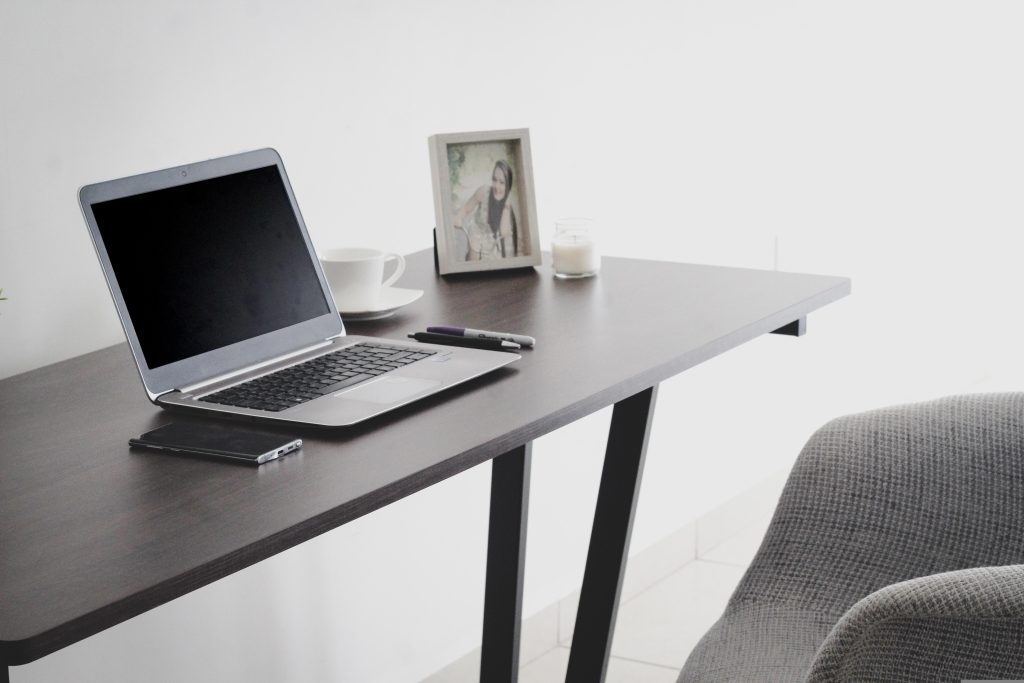The shift to Remote Work Setup has made having a well-designed home office more important than ever. Whether you’re working from home full-time or splitting time between the office and home, a functional Remote Work Setup is essential for maintaining focus, efficiency, and work-life balance. This guide will show you how to create a Remote Work Setup that increases productivity, covering everything from ergonomics and lighting to organization and technology. With these simple yet effective tips, you’ll be on your way to building a workspace that keeps you motivated and productive all day long.

1. Choose the Right Location: Minimize Distractions
Selecting the best spot for your home office is the first step to creating a productive environment. Choose a location that’s quiet, has minimal distractions, and is separate from your main living areas. If you have a spare room, convert it into a dedicated office space. For those with limited space, consider setting up in a corner of your bedroom or living room, using a room divider to create a sense of separation.
Key Tips for Choosing a Location
- Avoid high-traffic areas: Stay away from areas like the kitchen or living room, where family members are likely to walk by.
- Maximize natural light: Place your desk near a window to benefit from natural light, which boosts mood and productivity.
- Consider noise levels: If you’re easily distracted by noise, choose a spot where you can control sound levels. Noise-canceling headphones can be a great investment.
Why It’s Important
A designated, distraction-free workspace helps signal to your brain that it’s time to work, making it easier to focus and be productive.
2. Invest in Ergonomic Furniture: Prioritize Comfort and Health
Ergonomic furniture is critical for creating a productive home office setup. Poor posture can lead to back pain, fatigue, and decreased focus, so it’s worth investing in an ergonomic chair and desk.
Essential Ergonomic Tips
- Choose a chair with lumbar support: Your chair should support the natural curve of your spine and be adjustable for height and armrests.
- Adjust your desk height: Your desk should be at a height where your elbows form a 90-degree angle when typing.
- Monitor positioning: Place your monitor at eye level, about 20 inches away from your face, to prevent neck strain.
Pro Tip
Consider a sit-stand desk for more flexibility and to prevent the health risks associated with prolonged sitting. Alternating between sitting and standing can boost energy levels and productivity.
3. Optimize Lighting: Brighten Up Your Workspace
Lighting plays a huge role in how focused and alert you feel throughout the day. Poor lighting can cause eye strain, headaches, and fatigue, so it’s essential to get it right.
Lighting Tips for Productivity
- Maximize natural light: Set up your desk near a window, but position your monitor perpendicular to the light source to reduce glare.
- Use task lighting: Add a desk lamp with adjustable brightness for focused tasks.
- Avoid harsh overhead lights: Choose warm, ambient lighting instead of harsh fluorescent lights to create a comfortable environment.
Quick Fix
If your workspace lacks natural light, consider using a daylight lamp to mimic natural light and improve your focus and mood.
4. Declutter and Organize: Keep Your Workspace Tidy
A cluttered Remote Work Setup can lead to a cluttered mind. Keep your Remote Work Setup tidy and organized to maintain focus and efficiency. Use shelves, storage bins, and desk organizers to keep supplies and paperwork out of sight.
Organization Tips
- Use cable management tools: Organize cords and cables with cable ties or a cable management box.
- Implement a filing system: Use labeled folders or a file cabinet to store important documents.
- Create a “home” for everything: Designate specific spots for office supplies, electronics, and personal items.
Pro Tip
At the end of each day, take five minutes to clear your desk and put everything back in its place. Starting the next day with a clean desk can boost motivation and productivity.
5. Incorporate Personal Touches: Make It Inspiring
Your home office doesn’t have to be all business—adding personal touches can make it a space you actually enjoy spending time in. Surround yourself with items that inspire and motivate you, whether it’s artwork, plants, or a vision board.
Ideas for Personalization
- Add greenery: Plants not only improve air quality but also reduce stress and increase productivity. Consider low-maintenance options like succulents or snake plants.
- Use color strategically: Incorporate colors that promote focus, such as blue for concentration or green for calmness.
- Incorporate artwork: Hang up motivational quotes, paintings, or photos that inspire creativity and positivity.
Why It Works
A personalized workspace makes you feel more connected to your environment, boosting both mood and productivity.
6. Incorporate the Right Technology: Upgrade Your Tools
The right technology can make a big difference in how efficiently you work. From high-speed internet to dual monitors, ensure your home office is equipped with tools that help you stay productive.
Tech Essentials for a Productive Home Office
- High-Speed Internet: A reliable internet connection is crucial for smooth video calls and quick file downloads.
- Dual Monitors: Multiple screens make multitasking easier and improve workflow efficiency.
- Noise-Canceling Headphones: Block out background noise and stay focused during calls and meetings.
Pro Tip
Invest in a good-quality webcam and microphone if you frequently participate in virtual meetings. Clear audio and video can help you communicate more effectively.
7. Use Productivity Tools and Software
Incorporate productivity tools and software to streamline your workflow. From project management platforms to time-tracking apps, the right tools can help you stay organized and on task.
Recommended Tools
- Trello or Asana: Organize tasks, projects, and deadlines in a visually appealing format.
- Slack or Microsoft Teams: Communicate with colleagues and manage team collaboration.
- Toggl or Focus Booster: Track time and monitor productivity to identify areas for improvement.
Why It’s Important
Using the right tools can save time, reduce stress, and help you stay on top of your tasks, even when juggling multiple projects.
8. Create a Routine and Set Boundaries
Creating a routine and setting boundaries is essential when working from home. Without a clear structure, it’s easy for work to bleed into personal time, leading to burnout and decreased productivity.
Tips for a Healthy Routine
- Set clear work hours: Stick to a schedule to separate work time from personal time.
- Take regular breaks: Use the Pomodoro Technique or set a timer to remind yourself to take short breaks throughout the day.
- Create a “start” and “end” ritual: Use rituals like making coffee in the morning and shutting down your computer in the evening to signal the beginning and end of your workday.
Why It Matters
Establishing a consistent routine helps maintain work-life balance and keeps you mentally prepared for a productive workday.
Final Thoughts
Creating a productive home office doesn’t have to be complicated. By selecting the right location, investing in ergonomic furniture, optimizing lighting, and using the right technology, you can build a workspace that boosts focus, efficiency, and overall well-being. Use these home office setup tips to create a space that supports your work and helps you achieve your professional goals, no matter where you are.
References
- Harvard Business Review. (2023). Remote Work and Productivity: Best Practices. Available here .
- National Institute of Health. (2023). The Impact of Ergonomics on Health and Productivity. Available here.
- Forbes. (2024). Home Office Design Tips for Maximum Productivity. Available here.









